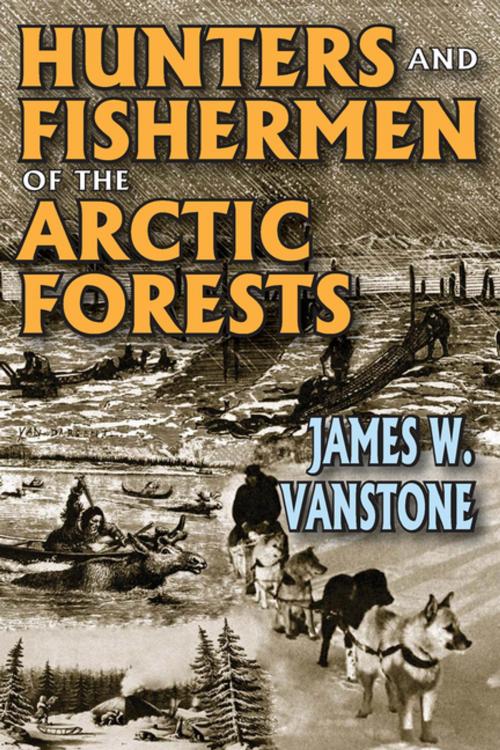Hunters and Fishermen of the Arctic Forests
Nonfiction, Social & Cultural Studies, Social Science, Anthropology| Author: | James W. VanStone | ISBN: | 9781351514088 |
| Publisher: | Taylor and Francis | Publication: | July 12, 2017 |
| Imprint: | Routledge | Language: | English |
| Author: | James W. VanStone |
| ISBN: | 9781351514088 |
| Publisher: | Taylor and Francis |
| Publication: | July 12, 2017 |
| Imprint: | Routledge |
| Language: | English |
The great expanse of Arctic and Sub-Arctic lands that stretch across the northern edge of the American continent is as difficult and demanding to human beings as any in the world. The Athapaskan-speaking Indians who made it their home never captured the imagination of popular writers as did the Eskimo who lived on their northern borders and the Plains Indians who lived to the south. Except to anthropologists, the Athapaskans have remained in relative obscurity, known intimately only to the missionaries, the traders and trappers, and the prospectors who invaded their forbidding territory.
VanStone has captured the elements of the basic adaptive strategy by which these Indians mastered their intransigent environment and made it their home over many centuries, and in doing so, he has perhaps also found the reasons why they have not had as much impact on Western thought as other Native Americans. The Plains Indians, with the blood and thunder of their raidings, the individual drama of their vision quests, appealed to that part of our culture that was forged on the frontier where both action and isolation were primary qualities. The Eskimos, with their elaborate technology for extracting a livelihood from the Arctic ice appealed to Yankee ingenuity.
Athapaskan culture was of a different order--less dramatic, but no less adaptive. Northern lands are not richly endowed with sustenance for human life. These adaptations have not only required proficiency with tools and techniques for exploiting this difficult habitat, but also the creation of institutions for collaboration in these endeavors. Hunters and Fishermen of the Arctic Forests illuminates this relatively obscure area of the world and brings it, and the cultures it supported, into the context of modern anthropological research.
The great expanse of Arctic and Sub-Arctic lands that stretch across the northern edge of the American continent is as difficult and demanding to human beings as any in the world. The Athapaskan-speaking Indians who made it their home never captured the imagination of popular writers as did the Eskimo who lived on their northern borders and the Plains Indians who lived to the south. Except to anthropologists, the Athapaskans have remained in relative obscurity, known intimately only to the missionaries, the traders and trappers, and the prospectors who invaded their forbidding territory.
VanStone has captured the elements of the basic adaptive strategy by which these Indians mastered their intransigent environment and made it their home over many centuries, and in doing so, he has perhaps also found the reasons why they have not had as much impact on Western thought as other Native Americans. The Plains Indians, with the blood and thunder of their raidings, the individual drama of their vision quests, appealed to that part of our culture that was forged on the frontier where both action and isolation were primary qualities. The Eskimos, with their elaborate technology for extracting a livelihood from the Arctic ice appealed to Yankee ingenuity.
Athapaskan culture was of a different order--less dramatic, but no less adaptive. Northern lands are not richly endowed with sustenance for human life. These adaptations have not only required proficiency with tools and techniques for exploiting this difficult habitat, but also the creation of institutions for collaboration in these endeavors. Hunters and Fishermen of the Arctic Forests illuminates this relatively obscure area of the world and brings it, and the cultures it supported, into the context of modern anthropological research.















